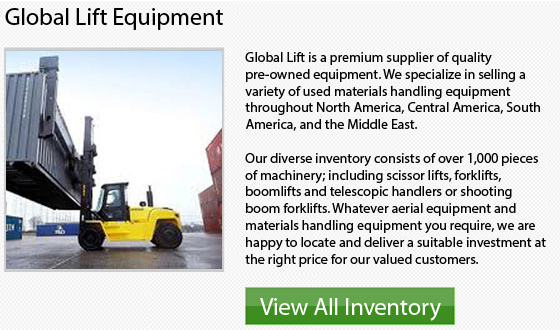
Sideloaders have become a great option for lots of businesses needing to perform handling tasks on unusual cargo. Sales of these models are small though, taking up 1% to 5% of the global forklift market.
Commonly, side-loaders are utilized in the timber, aluminum, glass, steel, construction and aviation businesses. Furthermore, they are utilized within businesses that are making unconventional items like moldings, and windmill arms. Basically any industry that makes awkward or oversized long things uses the side-loaders.
In the beginning of the 1950's, Henry Le Grande Lull from the Lull Manufacturing Company originally made the sideloader forklift. These early models were requested from the United States Air Force. The original concept was patented for commercial utilization but it was not developed until Lull Manufacturing was taken over by the Baker Raulang Company during the year 1959. It was Baker Raulang who put the design into production. Afterward, the name was changed to Baker Traveloader. During the latter part of the 1950s, the side-loaders were launched in Europe. The early models were designed by Italian manufacturer Fiora and the afterwards B-P Battioni e Pagani who pioneered the machine's use within timber yards.
The side-loader is a little different from the counterbalanced forklift, as the traditional forward-traveling forklifts have front facing forks while the side-loader has side facing forks. The operator though will drive inside a cabin similar to those utilized in conventional lift trucks. The lifting, loading, and unloading functions are performed by the mast situated at the driver's right-hand side. The cargo is typically transported lying on a metal or wooden deck. This helps to reduce distortion, stress and damage to the load. Recent innovations to the side-loader design have incorporated a huge range of lifting accessories being developed.
The use of side-loaders rather than the reach-stackers or standard lift trucks: safer operating conditions, improved visibility, and the ability to use available space more effectively as well as faster traveling speeds.
You will only be able to accurately determine the best kind of machine to finish your tasks, when you have fully evaluated the work setting and kinds of jobs you will be completing. There are a few good rental alternatives available too in order to determine the best kind of machine to suit your requirements. Doing some research on the Internet or talking to a respectable dealer is one more good way to get some information as well when trying to figure out the right option.